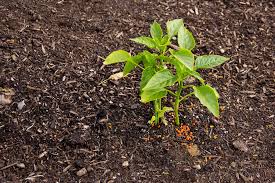
Aug . 02, 2024 14:39 Back to list
Exploring the Benefits of Using NPK Fertilizers with Balanced Nutrient Ratios for Optimal Plant Growth
NPK 14-35-14 Fertilizer A Comprehensive Overview
In the world of agriculture, the importance of soil fertility cannot be overstated. Farmers continually seek ways to improve crop yields and overall plant health, and one of the primary tools in their arsenal is fertilizer. Among the various fertilizers available, NPK fertilizers are among the most popular. NPK stands for Nitrogen (N), Phosphorus (P), and Potassium (K), three essential nutrients that play a crucial role in plant growth. One specific formulation, NPK 14-35-14, offers a unique blend that caters to the needs of various crops.
Understanding NPK Ratios
The numbers in NPK fertilizers represent the percentage of each nutrient in the mixture. For NPK 14-35-14, this means that the fertilizer contains 14% nitrogen, 35% phosphorus, and 14% potassium. Each of these nutrients serves a different purpose
1. Nitrogen (N) Vital for plant growth, nitrogen is a key component of amino acids, proteins, and chlorophyll. It promotes healthy foliage and overall plant vitality.
2. Phosphorus (P) Phosphorus is critical for root development, flowering, and fruiting. It helps plants convert nutrients into usable energy and plays an essential role in photosynthesis.
3. Potassium (K) This nutrient helps regulate various physiological processes, including water uptake and enzyme activation. Potassium enhances crop resilience to diseases, drought, and extreme temperatures.
Benefits of NPK 14-35-14
NPK 14-35-14 Fertilizer A Comprehensive Overview
Moreover, the balanced presence of nitrogen and potassium supports robust overall growth and helps plants withstand environmental stress. This balanced approach to fertilization can significantly improve crop yields and enhance quality, making NPK 14-35-14 a go-to option for many farmers.
npk 14 35 14

Application Methods
Using NPK 14-35-14 requires careful consideration of application methods to maximize efficiency and minimize environmental impact. It can be applied through broadcasting, banding, or fertigation, depending on the crop type and growth stage.
- Broadcasting Evenly spreading the fertilizer over the surface can work for larger fields but may lead to nutrient loss through runoff if not managed correctly.
- Banding Placing the fertilizer in concentrated strips near the plant roots can enhance nutrient uptake and minimize waste.
- Fertigation Injecting fertilizer into irrigation systems allows for precise nutrient delivery, ensuring that plants receive the necessary nutrients at optimal times.
Environmental Considerations
While NPK fertilizers like 14-35-14 can significantly increase agricultural productivity, they must be used responsibly to prevent environmental degradation. Over-fertilization can lead to nutrient runoff, causing water pollution and contributing to problems like algal blooms. Therefore, soil testing and following recommended application rates are crucial for sustainable agricultural practices.
Conclusion
NPK 14-35-14 is a versatile fertilizer that offers a unique nutrient blend tailored to enhance crop growth and productivity. Its high phosphorus content makes it especially beneficial during critical growth phases, while the balanced levels of nitrogen and potassium ensure overall plant health. However, responsible application and environmental stewardship are essential to maximize benefits and minimize ecological impact. By understanding the specific needs of their crops and the characteristics of this fertilizer, farmers can make informed decisions that lead to successful harvests.
-
Premium 10 10 10 Fertilizer Organic for Balanced Plant Growth
NewsJul.29,2025
-
50 Pound Bags of 13-13-13 Fertilizer for All Plants – Bulk & Organic Options
NewsJul.28,2025
-
High-Efficiency 15-30-15 Granular Fertilizer for Healthy Crops
NewsJul.28,2025
-
15-30-15 Granular Fertilizer for Optimal Crop & Lawn Growth
NewsJul.27,2025
-
Premium 10 10 10 Water Soluble Fertilizer for Fast Plant Growth
NewsJul.26,2025
-
Premium 10 10 10 Fertilizer Organic for Plants & Lawns
NewsJul.25,2025
